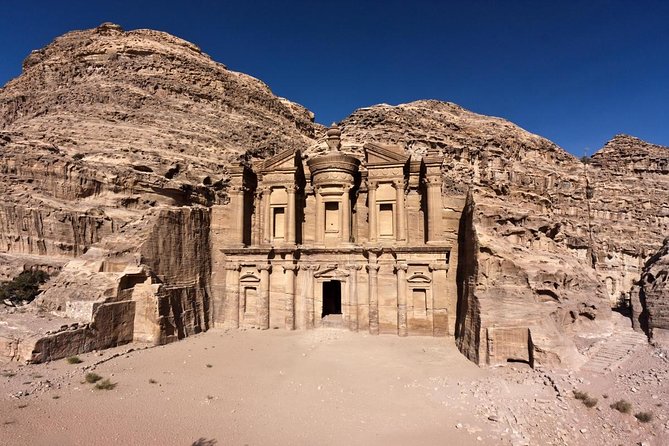Exploring the captivating history of the Hagia Sophia in Istanbul is a must-do for any visitor to the city. This iconic landmark, which has stood as both a Christian cathedral and an imperial mosque, offers a unique window into the cultural intersections that have shaped Turkey’s past. From the breathtaking Byzantine mosaics to the intricate calligraphic panels, the Hagia Sophia tour guides visitors through the monument’s multilayered narrative, revealing the remarkable fusion of Eastern and Western architectural influences. With expert commentary to illuminate the site’s compelling stories, this tour promises to leave you with a deeper appreciation for Istanbul’s rich heritage.
Key Points
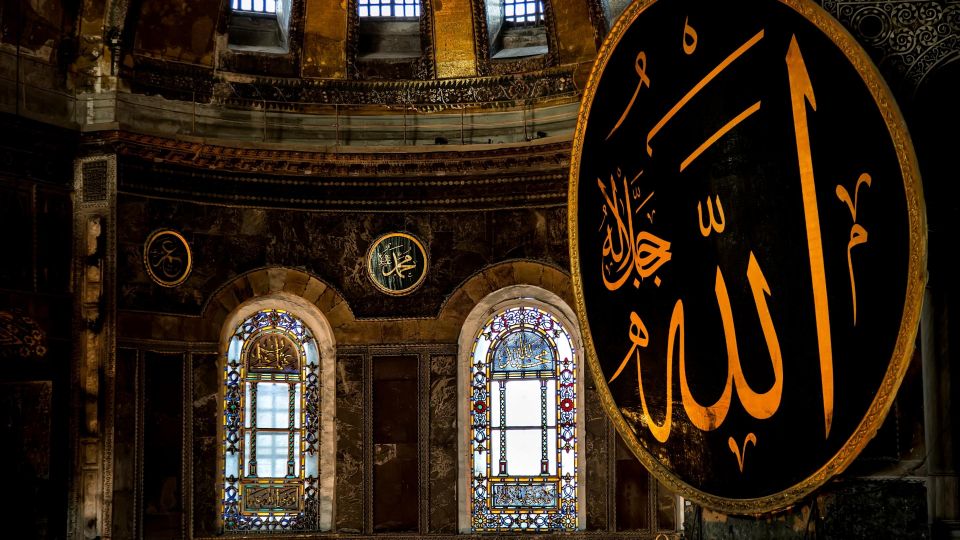
- Explore the architectural marvels of Hagia Sophia, including its massive central dome and intricate Byzantine mosaics.
- Discover the monument’s multilayered history as it transitioned from a Christian cathedral to an imperial mosque.
- Understand the diverse cultural influences and transformations evident in the fusion of Eastern and Western architectural styles.
- Explore the coexistence of Byzantine frescoes and Islamic calligraphic panels, reflecting the complex interplay of Christian and Islamic traditions.
- Gain insight into the captivating stories and rich cultural heritage embedded within the iconic marble columns and golden mosaics of Hagia Sophia.
Exploring the Hagia Sophia’s Origins
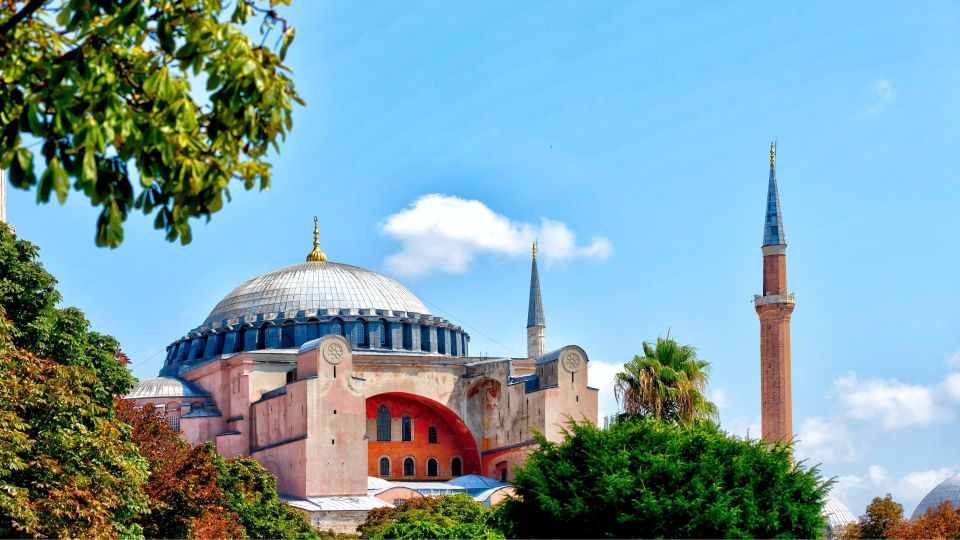
Istanbul: In the Footsteps of Stories – Hagia Sophia Tour
Exploring the Hagia Sophia’s Origins
The Hagia Sophia’s origins trace back to the 6th century AD when Byzantine Emperor Justinian I commissioned the construction of a grand Christian cathedral on the ruins of previous churches.
This ambitious project took over 5 years to complete, becoming one of the largest and most impressive churches in the Christian world at the time.
The cathedral’s innovative architectural design, featuring a massive central dome, has been lauded as an engineering marvel.
Over the centuries, the Hagia Sophia has seen many transformations, serving as a church, mosque, and now a museum, reflecting the rich tapestry of Istanbul‘s diverse cultural heritage.
Architectural Marvels and Intricate Mosaics
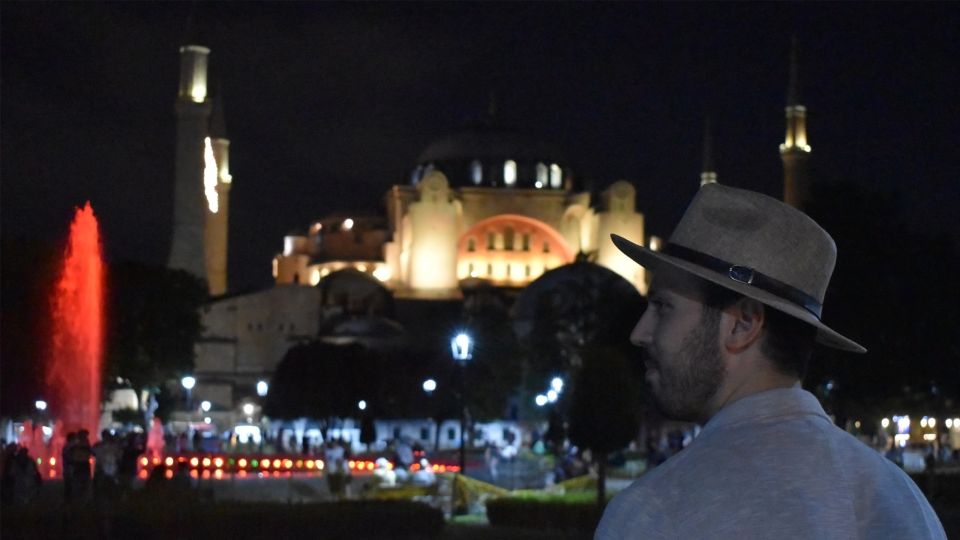
The Hagia Sophia boasts numerous architectural marvels, including its mammoth central dome that spans an impressive 31 meters in diameter and stands 55 meters tall, engineering feats that were unparalleled at the time of its construction in the 6th century.
Countless intricate Byzantine mosaics adorn the cathedral’s interior, offering visitors a glimpse into the skilled artistry and rich symbolism that adorned the structure. These mosaics depict religious figures, biblical scenes, and intricate floral and geometric patterns, showcasing the monument’s diverse cultural heritage.
Visitors can marvel at the sheer scale and technical mastery embodied in the Hagia Sophia’s design, which seamlessly blends Eastern and Western architectural influences into a truly iconic landmark.
From Christian Cathedral to Imperial Mosque
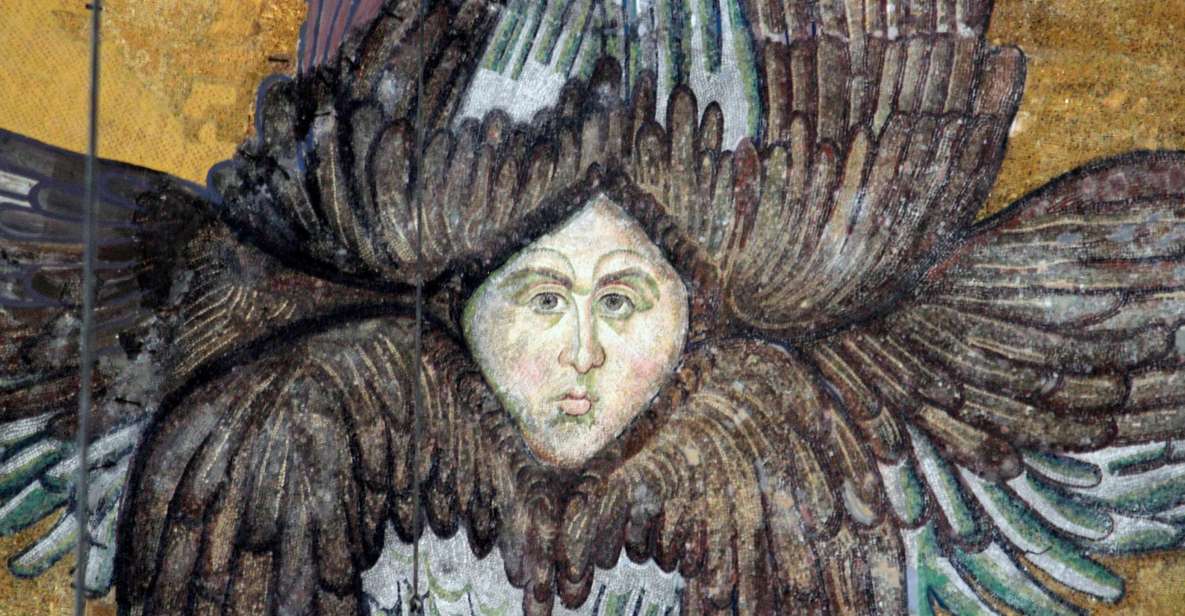
Originally constructed as a Christian cathedral in the 6th century, the Hagia Sophia has since undergone a remarkable transformation, serving as both an imperial mosque and a museum throughout its storied history.
During its time as a mosque, the monument underwent significant changes, with the addition of minarets and the covering of its iconic Byzantine mosaics.
Visitors today can explore the Hagia Sophia’s diverse architectural elements, from the grand domed ceiling to the intricate calligraphic inscriptions adorning the walls.
This unique blend of Christian and Islamic influences makes the Hagia Sophia a testament to the cultural richness of Istanbul, a city that has long been a crossroads of civilizations.
Uncovering the Monument’s Multilayered History
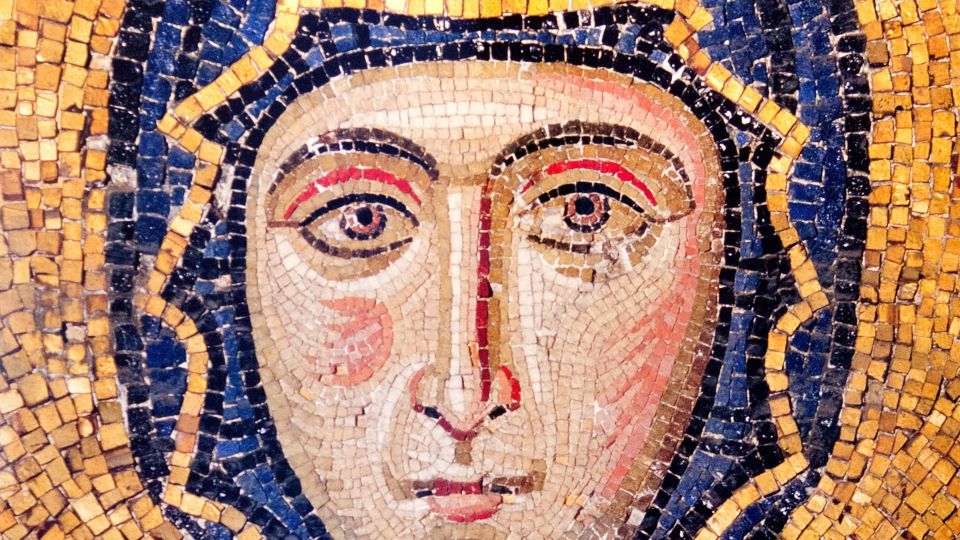
Beneath the grandeur of Hagia Sophia’s towering dome and intricate mosaics lies a captivating narrative of religious and political transformation that has spanned over 1,500 years.
Constructed in the 6th century as a Christian cathedral, the monument later became a mosque in the 15th century under the Ottoman Empire.
Visitors can explore the building’s multilayered past, discovering Byzantine frescoes alongside Islamic calligraphic panels.
From the iconic marble columns to the stunning golden mosaics, each element holds a story waiting to be uncovered.
Through the expert guidance of the tour, travelers can explore Hagia Sophia’s complex history and appreciate the diverse cultures that have left their mark on this architectural marvel.
Diverse Cultural Influences and Transformations
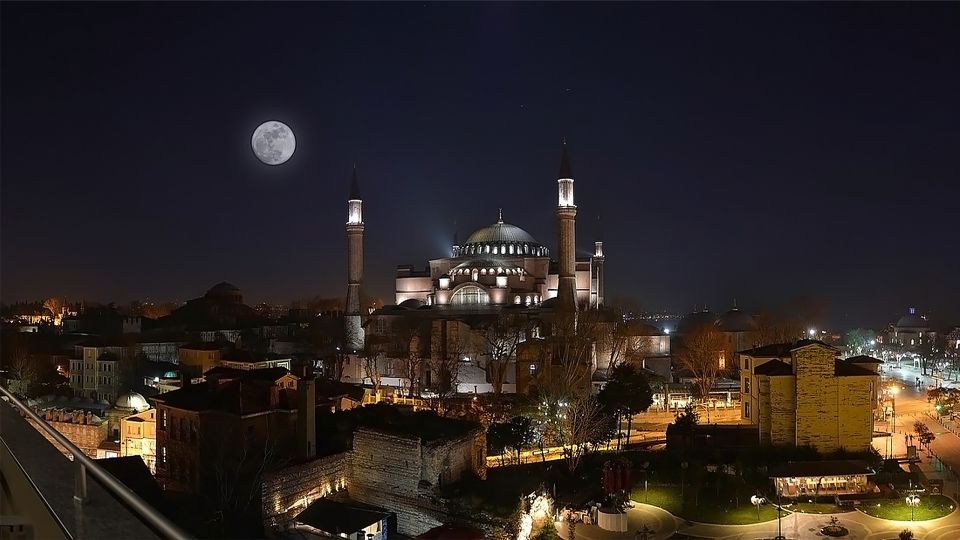
Hagia Sophia’s breathtaking architecture and ornate decor reflect the diverse cultural influences that have shaped its remarkable history over centuries.
From the Byzantine mosaics to the Ottoman calligraphic panels, each architectural element bears witness to the monument’s transformation and the coexistence of Christian and Islamic traditions within its walls.
The grand domed structure, with its fusion of Eastern and Western styles, exemplifies the religious and political shifts that have occurred in Istanbul over time.
Whether you’re captivated by the intricate Christian iconography or the elegantly inscribed Arabic calligraphy, the Hagia Sophia tour offers a unique opportunity to explore the complex interplay of cultures that have left an indelible mark on this iconic landmark.
Insights From Expert Tour Guidance
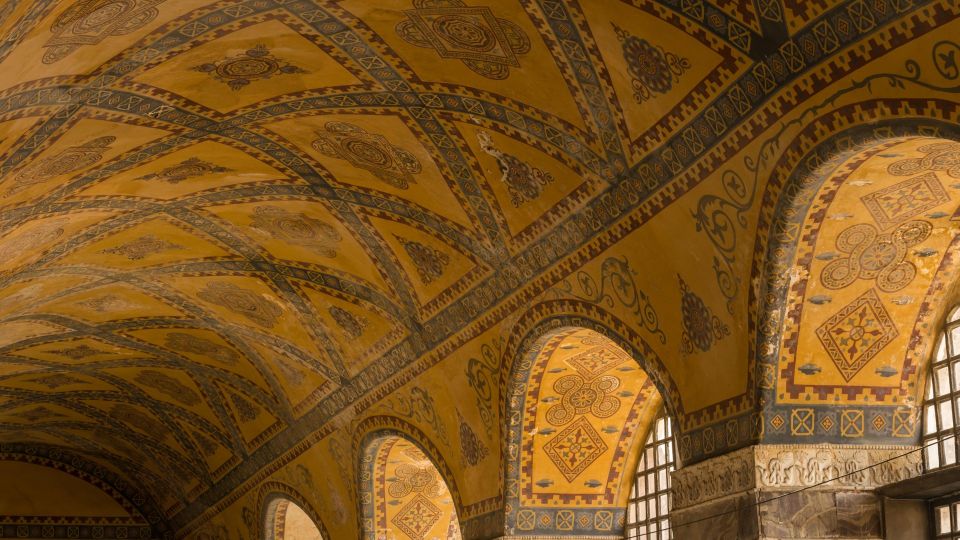
An expert-led tour of the Hagia Sophia provides visitors with invaluable insights into the monument’s rich history and architectural significance.
Knowledgeable guides skillfully unpack the complex layers of this iconic landmark, offering in-depth explanations that bring the Hagia Sophia’s past to life.
From its origins as a Christian cathedral to its transformation into an Ottoman mosque, the tour delves into the Hagia Sophia’s multifaceted heritage.
Guides point out the stunning mosaics and exquisite architectural details, revealing how this structure has been shaped by diverse cultural influences over the centuries.
With their expertise, visitors gain a deeper appreciation for the Hagia Sophia’s enduring legacy as a symbol of Istanbul’s rich history.
Practical Information and Tour Details
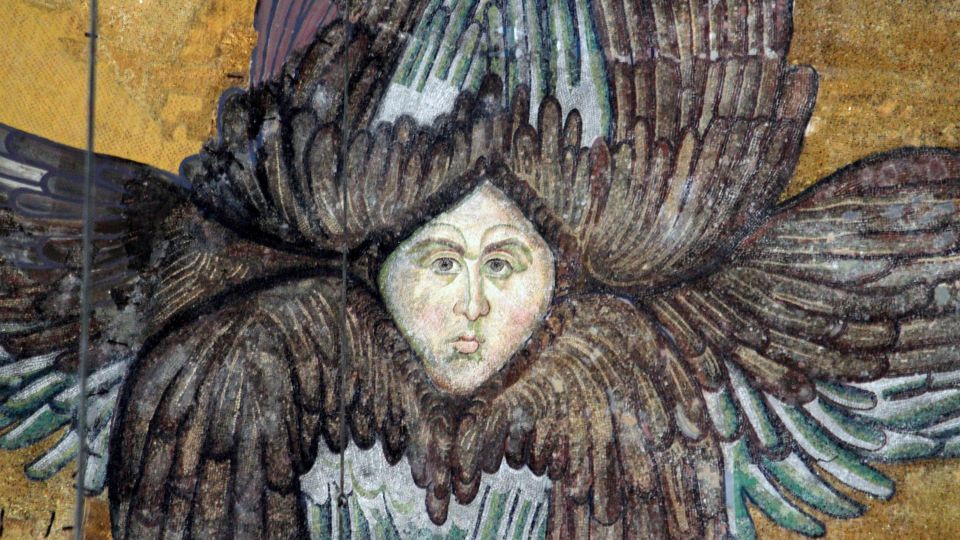
The Hagia Sophia tour lasts a convenient 1 hour, allowing visitors to explore the iconic monument’s rich history at a leisurely pace.
Guided tours are conducted in English, catering to international audiences. Participants meet at the designated spot behind the Sultanahmet (Blue Mosque) Tram Station, located in the nearby park.
The tour package includes entrance tickets to the Hagia Sophia, as well as the services of an expert guide.
However, it’s important to note that hotel pickup and drop-off, food, drinks, and gratuities aren’t included. Visitors should also bring their own scarves, as these are required for entering the Hagia Sophia.
Discovering the Hagia Sophia’s Compelling Narratives
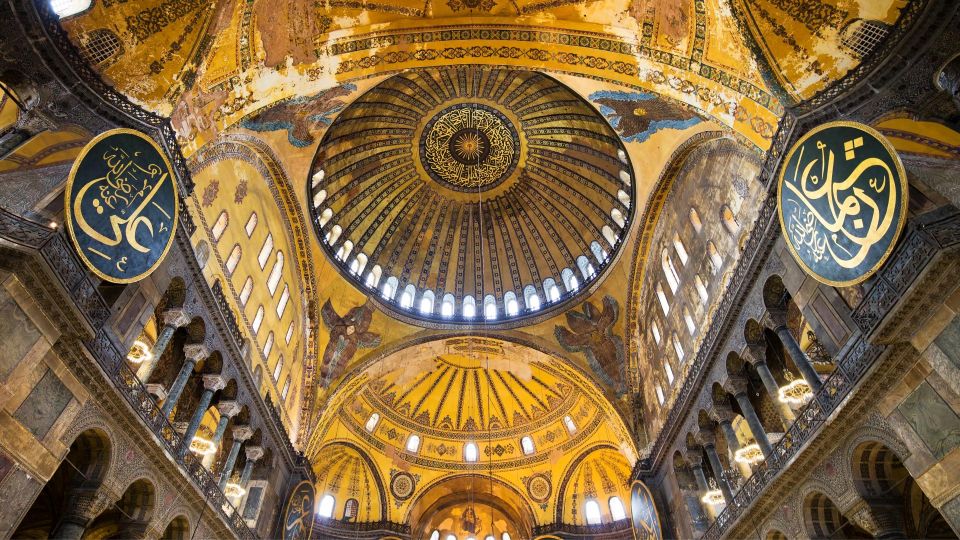
Istanbul: In the Footsteps of Stories Hagia Sophia Tour
Discovering the Hagia Sophia’s Compelling Narratives
What makes the Hagia Sophia’s history so compelling, visitors soon discover, is its intricate blend of Christian and Islamic influences spanning over a millennium.
As they explore the monument, they uncover:
- The remnants of glittering Byzantine mosaics that once adorned the interior walls, now coexisting with the elegant calligraphic panels of the Ottoman era.
- The shift from a Christian cathedral to a mosque, and later, a museum – each transition reflecting the diverse cultural forces that have shaped this iconic landmark.
- The architectural genius that seamlessly merges Byzantine, Roman, and Islamic design elements, creating a breathtaking space that has captivated visitors for centuries.
Recap

The Hagia Sophia tour in Istanbul is a captivating journey through the monument’s multilayered history. Visitors can explore the breathtaking Byzantine mosaics, intricate calligraphic panels, and iconic marble columns, gaining insight into the complex cultural heritage that has shaped this iconic landmark over the centuries.
The tour provides a unique opportunity to discover the Hagia Sophia’s compelling narratives and witness the remarkable fusion of Eastern and Western architectural influences.






